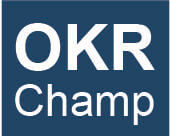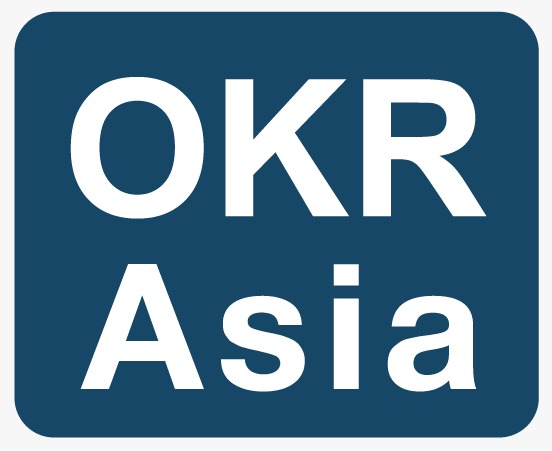OKR Coach Training: Setting ESG Goals with OKRs
OKR Coach Training: Setting ESG Goals with OKRs
Investing in or buying from companies that care for the environment is becoming important to investors and consumers, respectively. As a result, the Environment, Social, and Governance (ESG) agenda is increasingly being focused on OKR Coach training.
It is advisable for teams to clearly define their ESG goals in order to report on actual results. Keeping ESG commitments is often a side project when you have multiple business priorities, the most important being to keep your company afloat. A team can bridge the strategy execution gap with frameworks that allow it to do both. To achieve the team’s ESG goals, let’s show you how to use the OKR framework.
The importance of ESG goals in OKR Coach Training: What are they?
The purpose of businesses is to serve society and to earn profits. However, it is common for organisations to forget that our society is an integral part of a broader ecosystem.
With the advent of the ESG in organisations, businesses are now showing interest towards serving the broader stakeholders of our world – the people and the planet – as we grow collectively.
Moreover, NGOs, governments, and the public are pushing business leaders to increase their commitment to sustainability, ethics, and people.
In order to achieve certain results when it comes to ESG, a team must develop and execute strategies. Investing in local communities, increasing diversity and inclusion in the workplace, and reducing waste can be some examples.
If an organization fails to achieve the ESG goals, then it is possible that the nation’s regulation will play its part or any funding might be halted.
A study found that 49% of investors are willing to divest from companies if they are not taking adequate actions on environmental, social, and governance issues.
Why use OKRs for ESG goals in OKR Coach Training?
An OKR is an acronym for objectives and key results. No matter what size or industry a company is in, it can benefit from a goal-setting framework. The core purpose of OKRs is to help your team identify, define, and accomplish the right goals.
OKRs are helpful when it comes to ESG goals and ESG strategies for the following reasons.
1. OKRs make it possible to set transformative ESG goals
A team is advised to write goals that stretch its capabilities as part of the OKR process. They are encouraged to dig deep to find the resources needed to overcome the challenges an organisation collectively faces when it comes to ESG goals.
A team might also need to make prominent changes to their company’s culture and operations in order to cope with ESG challenges. Transformative goals are the motivation behind OKRs as a method. In order to succeed with the method, a team needs to think big and aim for “moonshots”. By evolving a team’s capabilities to meet the goal, a company can gain the maximum value from its team’s execution.
Additionally, OKRs provide an accountability mechanism by tracking key results, ensuring that these big goals are met. OKRs solve the dilemma of having a big picture vision while also having a plan for achieving it.
Looking for an OKR certification course?
2. Establish OKRs to align your team toward ESG implementation
ESG priorities could highlight a team’s diverse interests if the organisation introduces changes. It is possible for a team to adopt the initiative quickly in some situations, while in others, they may wait for someone else to step forward to fill the void. ESG priorities may also cause conflict between groups and individuals. The desire of the finance department to cut costs may conflict with the legal team’s requirement for stricter ESG compliance.
By creating a clear line of sight across all directions, OKRs can help build alignment toward ESG goals by following ways:
Vertical line of sight: Your team can use OKRs to understand what they can do to directly contribute to the company’s goals. Their actions will be influenced by ESG metrics.
Horizontal line of sight: In OKR framework, teams are not perceived as separate or competing departments, but as partners working towards a common goal.
It is seen in the organisations that the transparent nature of OKR deployment leads to more collaboration and accountability within the organisation when it is done properly. In contrast to an individual or department dealing with problems in silos, anyone can identify challenges and roadblocks quickly.
3. OKRs ensure that strategies are executed effectively
Managing competing priorities is one of the biggest challenges organisations face. Growth, cost cutting, efficiency and innovation are just a few of the things that can be prioritised by a company. Companies often land on the bottom of the priority list when it comes to ESG commitments.
However, OKRs can help here. In their most basic form, OKRs are designed to solve a problem that teams face most frequently: the execution of their strategies. OKRs act as a “GPS” for the organisation, which is often referred to as a “map” or “waypoint”. A team can also use OKRs to keep your team on track through real-time adjustments in addition to helping define their destination and focus.
4. Measure real ESG progress by Key Results(KRs)
Companies usually find it easiest to develop key results around environmental impact, such as miles saved, paper saved, energy saved, etc. Moreover, KRs can be compared easily with previous quarters or years, and some of these are directly linked to UN Sustainable Development Goals.
Key results on social and governance often come down to the tangibility and measurability of these topics. In addition to directly measuring diversity and employee benefits, frequent employee and stakeholder surveys and retrospective techniques are ways to measure other social issues.
Conclusion
Companies should keep track on their ESG progress with OKRs rather than just a fluffy promise. Moreover, it is paramount to create a culture of trust to enhance the implementation of OKRs.










